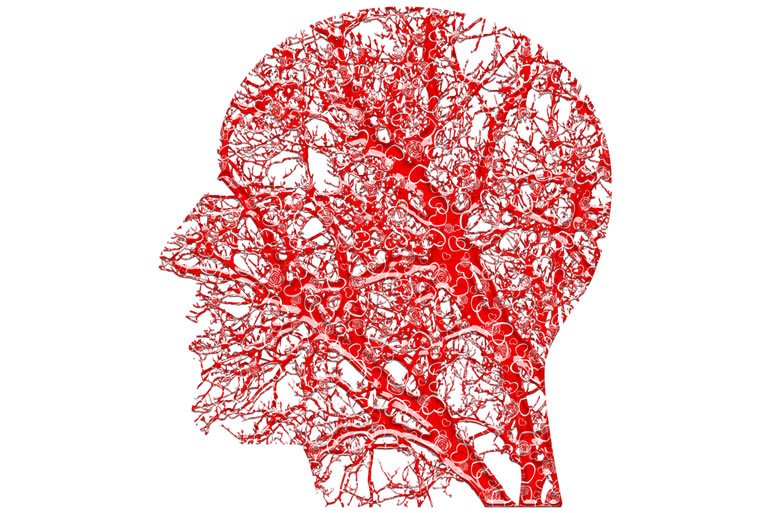Summary: Older women with type 2 diabetes do not use as much oxygenated blood in their brains as those who do not have the disease. Findings demonstrate alterations in neural blood use are a primary reason for deficits in motor function experienced by those with diabetes.
Source: University of Houston
A University of Houston researcher is reporting that the brains of older women with Type 2 diabetes do not use as much oxygenated blood as those who don’t have the disease. The research is the first to point to changes in blood use in the brain as the primary reason for diabetes-related deficits in motor function. It also furthers the understanding of sensory and motor symptoms as a precursor to developing dementia and Alzheimer’s diseases, both of which are linked to diabetes.
“It’s a pretty significant finding. Typically, when someone presents with a sensory or motor issue along with Type 2 diabetes mellitus, the assumption is that it’s the result of peripheral nerve damage in the hands and feet,” said Stacey Gorniak, associate professor in the UH Department of Health and Human Performance and director of the Center for Neuromotor and Biomechanics Research. Gorniak published her findings in the journal Neurophotonics.
Until now there has been no assumption that something is going on with respect to brain function that is affecting sensory and motor functions in persons living with Type 2 diabetes.
“Emerging evidence has suggested that factors outside of nerve damage due to Type 2 diabetes mellitus, such as impaired cortical blood use, contribute significantly to both sensory and motor deficits in people with diabetes,” reports Gorniak.
Nearly 24% of the 40 million people in the United States over the age of 60 live with Type 2 diabetes. Problems with hands, fingers and feet are common side effects of the disease and can lead to a loss of independent living and decline in quality of life.
Gorniak’s testing method is unique. Rather than using a typical MRI to monitor the use of oxygenated blood, she opted to use a technique called functional near infrared spectroscopy (fNIRS). The fNIRS is a method that delivers infrared light into the scalp to measure use of both oxygenated and unoxygenated blood use by the brain. This technique differs from MRI as MRI cannot measure oxygenated blood use. The fNIRS method can be used on persons who cannot have an MRI.
She tested a group of 42 post-menopausal women, over 60, half of whom had Type 2 diabetes, and asked them to perform various exercises with their hands. She chose this group because they are generally at the highest risk for diabetes, heart disease and dementia.

“Our work demonstrates that motor changes in people with diabetes occur independent of sensory impairment and that these changes are unrelated to disease duration and severity. Our data point towards other factors such as changes in muscle and reduced function of the cortex as underlying mechanisms for problems in sensory and motor functions,” Gorniak reports.
Her findings, she said, opens research possibilities for other groups of people with the disease, in hopes of finding a way to therapeutically avoid the negative health effects of diabetes.
“We need to see what this looks like in a larger population, including men, and then we can start developing treatments or different ways we could potentially stop these negative impacts of Type 2 diabetes,” said Gorniak.
About this neuroscience research article
Source:
University of Houston
Contacts:
Laurie Fickman – University of Houston
Image Source:
The image is in the public domain.
Original Research: Open access
“Functional neuroimaging of sensorimotor cortices in postmenopausal women with type II diabetes” by Stacey Gorniak, Victoria Wagner, Kelly Vaughn, Jonathan Perry, Lauren Gulley Cox, Arturo Hernandez, Luca Pollonini. Neurophotonics.
Abstract
Functional neuroimaging of sensorimotor cortices in postmenopausal women with type II diabetes
Significance:
Deficits in sensorimotor function in persons with type II diabetes mellitus (PwDM) have traditionally been considered a result of peripheral nerve damage. Emerging evidence has suggested that factors outside of nerve damage due to type II diabetes mellitus, such as impaired hemodynamic function, contribute significantly to both sensory and motor deficits in PwDM.
Aim:
The focus of the current study was to evaluate functional cortical hemodynamic activity during sensory and motor tasks in PwDM.
Approach:
Functional near-infrared spectroscopy was used to monitor oxyhemoglobin (HbO) and deoxyhemoglobin (HbR) across the cortex during sensory and motor tasks involving the hands.
Results:
Decline in HbO across sensory and motor regions of interest was found in PwDM with simultaneous deficits in manual motor tasks, providing the first evidence of functional cortical hemodynamic activity deficits relating to motor dysfunction in PwDM. Similar deficits were neither specifically noted in HbR nor during evaluation of sensory function. Health state indices, such as A1c, blood pressure, body mass index, and cholesterol, were found to clarify group effects.
Conclusions:
Further work is needed to clarify potential sex-based differences in PwDM during motor tasks as well as the root of reduced cortical HbO indices but unchanged HbR indices in PwDM.






